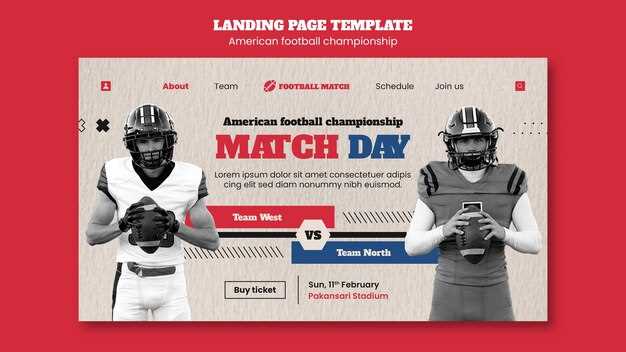Begin with a precise niche: professionals aged 28–42 in metro areas who seek serious relationships. Create a lean dating-service offering: curated introductions, a structured intake, and a 6‑week engagement plan. Pricing includes $29–49 monthly plans, a premium tier at $79–129, plus a $199 onboarding fee. In the first 8 weeks aim for 150 paying members and a 60–70% monthly retention rate. Clarity of value drives conversions.
Design a data-driven intake: collect 12 questions on values, lifestyle, and relationship goals; apply a simple scoring rubric to present clients with 2–4 vetted introductions per cycle. Team setup: 1 dedicated relationship consultant per 25 clients to keep quality high. Track lead time from signup to first intro, target under 14 days. Five key metrics to monitor: signup rate, interview completion rate, match rate, conversion to paid, and retention.
Acquire clients through diversified channels: landing pages, content marketing, partnerships with life coaches and therapy professionals, plus a referral program. Goals: cost per lead $5–$15, landing-page conversion 4–6%, email drip open rate 25–35%, click-through 8–12%, referral incentive 20% off. Run iterative tests monthly to sharpen messaging and offers.
Run operations with privacy in mind: store only essential data; encrypt data in transit and at rest (TLS); hash passwords; perform regular backups; implement a clear data-retention policy; comply with GDPR oraz CCPA when serving EU or CA users; enforce strict access controls and maintain audit logs.
Plan for growth and milestones: target 1,000 paying members by month 12; reach break-even around months 9–12 with steady CAC; monitor monthly churn and aim for 4–6%. Use client surveys to refine the offering; set quarterly revenue targets and keep marketing spend under 50% of lifetime value to sustain momentum.
Define your niche and ideal client profile
Target a single, underserved segment with tangible willingness to invest in a curated dating service. Validate demand with a quick research sprint: 80–120 survey responses and 15–20 in-depth interviews across two metro areas within four weeks.
Niche criteria should include geography, age band, income level, and dating goals. Example: urban professionals aged 28–42, income above $120k, seeking a committed relationship, valuing privacy, and with limited time for social life. Exclude those pursuing casual dating or with highly irregular schedules.
Ideal client persona helps crystallize messaging. Create a profile like: Alex, 34, software engineer in Seattle, earns $140k, single, active in community events, time-constrained, prefers professional introductions, values discretion and compatibility, and is willing to invest in a structured process. Map preferences: location radius, education level, hobbies, deal-breakers, and must-have traits.
Pricing and service scope should align with the persona and the level of personalization. Offer tiers such as Essentials (up to 6 curated introductions per month with brief coaching), Core (12 matches per month with biweekly coaching and profile optimization), and Elite (24 matches with weekly coaching, background checks, and meeting logistics). Fees should reflect screening depth, privacy protections, and expected outcomes. Include a simple ROI calculation: average client lifetime value minus monthly service fees.
Messaging and positioning should emphasize proprietary intake, curated matches, discretion, and measurable progress. Craft a concise value proposition: “We deliver compatible introductions through structured intake, rigorous screening, and thoughtful match curation for busy professionals.” Focus on process transparency, confidentiality assurances, and concrete milestones rather than guarantees.
Channel and lead-gen plan prioritizes referrals from satisfied clients, partnerships with upscale venues, and targeted campaigns on LinkedIn and Instagram. Use anonymized case highlights and process walkthroughs to demonstrate credibility. Set monthly lead targets based on capacity, for example 40 qualified inquiries with a 25% conversion to consultations.
Quality controls are essential: implement a thorough intake questionnaire, explicit data usage consent, and a trial consultation. Track KPIs such as inquiry-to-consultation rate, consultation-to-signup rate, average matches per month, and client retention over 12 months. Reassess the niche after 90 days of real results and refine the persona accordingly.
Design a repeatable intake and matching workflow
Use a capped, two-minute intake form that captures 20–25 data points and automatically routes to a three-stage flow with defined SLAs.
Data you collect should be structured and validated at entry. Include the following fields:
- Contact details: name, email, phone, time zone
- Demographics: age, city, relationship status
- Relationship goals: long-term, short-term, non-negotiables
- Must-haves and deal-breakers: non-negotiables and preferences
- Preferences: preferred communication channel, languages, age range, location radius
- Lifestyle indicators: smoking, alcohol use, pets, exercise frequency
- Availability: mornings/afternoons, weekly rhythm
- Core values and interests: values keywords, hobbies
- Interest level and consent: permission to use data and be contacted
Data handling and quality rules:
- Identity verification: optional photo or ID for high-value introductions
- Mandatory fields validation: no blank critical fields, correct formats
- Enrichment sources: verify email domain, format phone numbers, capture social handles when available
Matching rubric and weights (default values):
- Goal alignment 25%
- Location proximity 15%
- Lifestyle compatibility 15%
- Values fit 15%
- Communication style compatibility 10%
- Availability alignment 10%
- Past outcomes and feedback 5%
Automation and human review:
- Run auto-match against the rubric and surface top 3–5 candidates
- Flag borderline cases for human review within 48 hours
- Store rationale and notes for each suggested pairing
- Escalate to a human specialist when new data changes the scoring by more than 10%
Scheduling and outreach:
- Provide tailored intro templates per channel (email, text, calendar invite)
- Link scheduling to available time slots and time zones
- Send automated reminders if there is no response after 3 days
Calibration and governance:
- Review weights monthly using outcome data and satisfaction signals
- Audit data retention, opt-in status, and consent logs
- Maintain versioned rubric and preserve escalation notes
Key performance indicators:
- Time to first contact: target ≤ 24 hours
- Intake completeness: ≥ 95%
- Initial pairings accepted for introduction: ≥ 40%
- Response rate within five days: ≥ 60%
- Average touches to confirmation: < 5
Set pricing, packages, and client onboarding milestones
Zalecenie: implement a three-tier pricing framework with fixed setup fees, monthly retainers, and a performance-based bonus, all with clearly defined deliverables and response times. Use named tiers such as Starter, Growth, and Elite, and publish a concise calendar of milestones for client visibility.
Pricing structure: Starter includes a $1,250 setup and $450 monthly, Growth includes a $2,900 setup and $1,100 monthly, Elite includes a $5,500 setup and $2,000 monthly. Optional performance bonus: 5–8% of the first engagement value or a flat $1,000 if a paid match is confirmed within 60 days. Payment terms: 50% upfront, 50% after onboarding milestones are met. Offer an annual plan with two months free for upfront commitment.
Onboarding milestones:
Milestone 1: Signed agreement and completed privacy forms within 1 business day.
Milestone 2: Intake questionnaire filled (goals, values, dealbreakers, preferences) and basic profile data captured within 2 business days.
Milestone 3: 60-minute alignment call and goal validation; preference calibration finalized within 3 business days after intake.
Milestone 4: Assets gathered (photos, bios) and profiles optimized in the system within 5 business days.
Milestone 5: First shortlist delivered (3–5 curated profiles) within 7–10 business days after intake.
Milestone 6: First introduction sent to vetted prospects within 10–14 days; responses tracked and logged.
Milestone 7: Feedback loop after initial date; plan adjustments completed within 7 days of the date.
Milestone 8: Renewal or upgrade options reviewed at the end of the initial term with clear next steps.

 Start a matchmaking business">
Start a matchmaking business">


 Dating app pitfalls">
Dating app pitfalls">
 Loneliness crisis dating">
Loneliness crisis dating">
 Zostań swatką">
Zostań swatką">